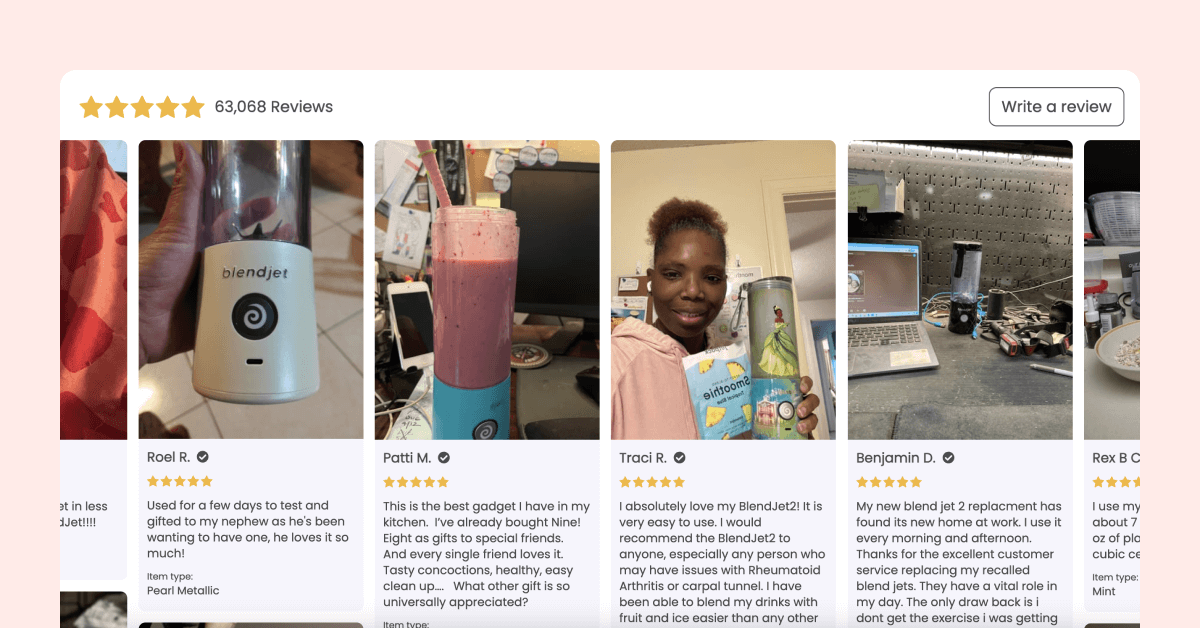In today’s digital landscape, businesses constantly seek new ways to attract investors and secure funding. One often overlooked yet highly effective strategy is leveraging user-generated content (UGC). UGC not only builds brand credibility and engagement but can also be a powerful asset in convincing investors of a company’s potential for growth and sustainability.
Total giving reached $557.2 billion in 2023, showcasing the immense opportunities available for businesses to secure funding through various channels, including UGC-driven strategies. As brands seek investment, the ability to present strong customer engagement and organic brand advocacy can set them apart in a competitive funding environment.
Understanding UGC and Its Business Impact
User-generated content includes any form of content, reviews, testimonials, social media posts, blog entries, and videos, created by customers rather than the brand itself. This content is authentic social proof, influencing potential buyers and validating the brand’s value proposition. For businesses, UGC translates to increased trust, community engagement, and revenue growth, which are crucial for attracting investors.
Unlike traditional advertising, UGC provides an organic, customer-driven narrative that resonates more with audiences. Studies show that 79% of people trust UGC reviews as much as personal recommendations, making UGC one of the most effective ways to build a credible reputation. Additionally, UGC fosters a sense of community, encouraging customers to become creators who generate content and advocate for the business, something investors recognize as a sign of long-term growth potential.
How UGC Strengthens Funding Opportunities
1. Demonstrates Market Demand
Investors are more inclined to fund businesses with proven market demand. UGC, such as customer testimonials and product reviews, acts as organic validation that the market needs and actively supports the brand. A business showcasing thousands of positive customer interactions can provide tangible evidence of consumer interest and retention, making it a more attractive investment opportunity.
Additionally, UGC helps businesses gauge customer sentiment in real time. By monitoring comments, reviews, and social media interactions, businesses can adapt to consumer needs quickly, demonstrating agility and responsiveness—qualities that investors highly value when evaluating funding prospects.
For example, Airbnb leveraged UGC early in its growth phase, with users sharing stories, reviews, and UGC photos of their stays. This organic content built trust among new users and was key in securing investments from prominent venture capital firms.
2. Reduces Customer Acquisition Costs (CAC)
High customer acquisition costs can be a red flag for investors. UGC, however, significantly reduces these costs by encouraging word-of-mouth marketing and organic reach. When customers voluntarily promote a brand through their content, it minimizes the need for expensive paid advertising campaigns. Investors appreciate businesses that leverage cost-effective growth strategies, making UGC a compelling asset during funding pitches.
Moreover, companies that integrate UGC into their marketing strategies often see a higher return on investment (ROI). Studies suggest that customers acquired through UGC-based referrals have a 37% higher retention rate than those acquired through traditional paid channels. This retention demonstrates stability and sustainable growth—two key factors investors consider when considering funding opportunities.
Brands like Glossier have built their entire marketing strategy around UGC, with real customer testimonials and makeup tutorials driving sales. This approach reduced their advertising expenses and attracted investors impressed by their organic customer engagement.
3. Enhances Brand Credibility and Trust
Investors are more likely to support brands with strong credibility in the market. A brand with an engaged audience producing and sharing content organically is perceived as trustworthy and influential. Case studies and real-world examples of how UGC has led to increased sales or viral success stories can be persuasive in demonstrating brand loyalty and longevity.
Businesses can showcase customer satisfaction and loyalty by featuring UGC video in marketing materials. For instance, highlighting five-star reviews, customer video testimonials, or social media interactions in pitch presentations can prove consumer enthusiasm, reinforcing investor confidence.
Tesla, for instance, has benefited significantly from UGC, with customers frequently sharing videos, reviews, and testimonials about their vehicles. This organic content has helped the brand maintain credibility, attract investors, and drive continued growth.
4. Provides Data-Driven Insights
Beyond its marketing benefits, UGC is a rich source of consumer insights. By analyzing UGC, businesses can identify UGC trends, customer preferences, and pain points, enabling them to refine their product offerings. Investors value data-backed decision-making, and companies leveraging UGC analytics can present a well-informed, strategic business plan when seeking funding.
For example, businesses can use AI-driven sentiment analysis to examine UGC and determine customer satisfaction. Such insights can help refine products, optimize marketing strategies, and develop new offerings based on user feedback. Investors are likelier to back companies that demonstrate a deep understanding of their customer base and use data to drive decisions.
5. Attracts Crowdfunding and Community-Driven Investments
Crowdfunding platforms such as Kickstarter and Indiegogo thrive on strong community engagement. Businesses that actively encourage UGC create a sense of involvement among potential backers. Businesses can fuel excitement and trust by showcasing customer testimonials, user-generated product demonstrations, and real-life success stories, leading to successful crowdfunding campaigns.
A prime example of UGC-driven crowdfunding success is Pebble, the smartwatch company that raised over $20 million on Kickstarter. Pebble’s campaign heavily relied on user testimonials, social media buzz, and community-driven discussions, proving that potential investors are more likely to contribute when they see enthusiastic user participation.
Strategies for Leveraging UGC to Secure Funding
- Incorporate UGC in Pitch Decks: In investor presentations, include real customer testimonials, social media engagement statistics, and UGC campaign success stories.
- Showcase UGC on Business Websites and Social Media: Highlight authentic customer experiences to demonstrate market traction and brand loyalty.
- Engage Influencers and Advocates: Encourage brand advocates and micro-influencers to generate content that supports your business case.
- Use UGC for Storytelling: Craft compelling narratives around how customer experiences have shaped and propelled business growth.
- Highlight UGC-Driven Sales Growth: Provide data on how UGC has directly contributed to revenue, customer acquisition, and brand visibility.
- Leverage UGC in Crowdfunding Campaigns: Encourage potential backers to share their excitement about your product or service, creating organic momentum that attracts more investors.
Conclusion
User-generated content is more than just a marketing tool—it’s a powerful strategy for securing funding. By leveraging UGC to demonstrate market validation, reduce acquisition costs, enhance brand credibility, provide data insights, and attract crowdfunding, businesses can position themselves as attractive investment opportunities.
As businesses look for innovative ways to gain funding, embracing UGC can give them a competitive edge. Whether through organic testimonials, influencer collaborations, or data-driven insights, UGC offers a dynamic approach to proving market demand, building credibility, and securing the capital needed for growth.





